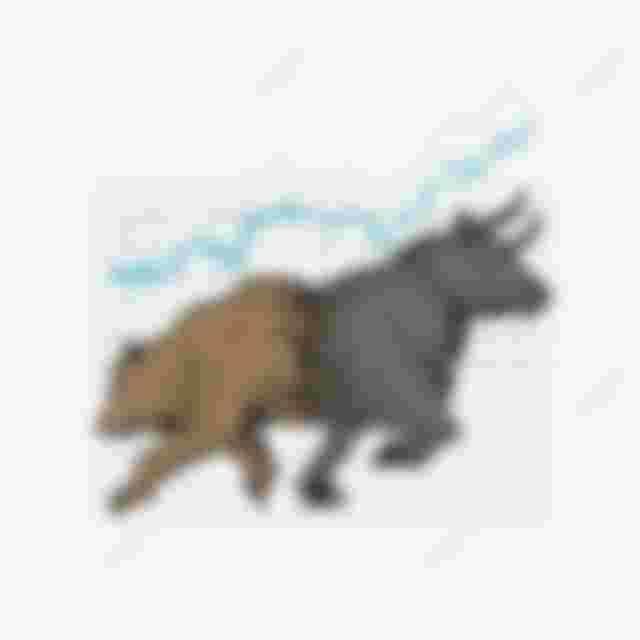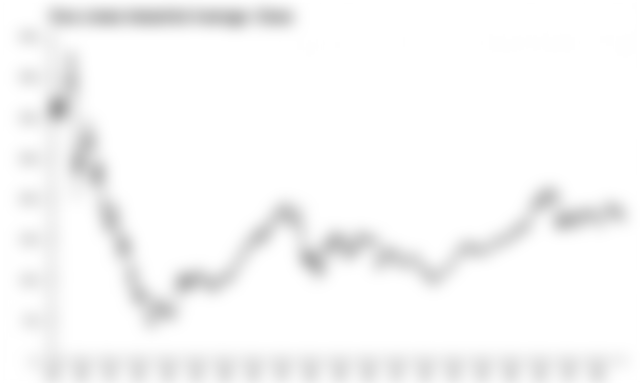Bulls and bears on Wall Street

All of us in the stock market world have heard of bulls and bears, two powerful animal symbols used to describe trends in the financial markets. On Wall Street, bulls and bears are in constant battle and they speak of bull and bear to refer, respectively, to the bullish and bearish environment. The duration of the trend is the key.
Overall market sentiment sometimes leans towards optimism and investors who are optimistic about the future of the market are known as bulls; and at other times market sentiment leans towards pessimism and those who have a more conservative approach to investing and/or are bearish are known as bears.
So if we are in a bull environment it means that investors recognize that this market is powerful, can respond to potential long-term problems and is profitable. The bear environment represents a market with dangerous dips in investor confidence, but which is very difficult until the bear gets tired and calms down, so the market is bearish.
Bulls and bears in the financial world
Think of the lazy nature of the bear and the energetic and stocky character of the bull. Bull symbolizes charging forward with overconfidence, while bear symbolizes preparation for winter and hibernation. But how did the figures of bulls and bears end up associated with the financial world? No one really knows the exact origin of these stock market-related terms, but I'll tell you some curious theories:
Bear hunters, given the high demand, sold the skin before catching the bear, (as is done in short positions), in the hope that the price would go down from the time they sold it until they delivered it; hence the term "bear" for one who opens positions thinking that the market will go down. Although it dates back to the 17th century in the proverb that it was unwise to "sell the bearskin before you have caught the bear", in the 18th century the term "bearskin" was shortened to "bear market" and applied to stocks that are sold by a speculator.
At about the same time the term "bull" made its debut, it originally referred to a speculative purchase of stocks in the expectation that they would rise. The first recorded use of the term dates back to 1714. The Oxford English Dictionary cites an 1891 use of "Bull Market" in the long term. The Etymological Dictionary relates the word "bull" to "to inflate, swell" and dates its stock market connotation to 1714.
In Elizabethan England strange combats were organized to entertain the public in which a bull was put to fight against a bear and bets were made. From this fight of the bear against the bull derived the term bulls for those who consider that the market is going to rise, by simple contrast to the bear in his circus battles. It is the same story that during the California Gold Rush, bulls and bears were thrown into a ring to fight as entertainment for the miners. Today's modern day miners are a group of stockbrokers and financial services professionals.
Bulls attack from bottom to top using their horns, hence the term is used for uptrends. Bears, on the other hand, attack with their claws from top to bottom, hence the term is used for downtrends.
They also say that it is the posture these animals have when they are on all fours: bulls' necks are angled upward and bears' necks are angled downward.
Bulls and bears in stock market terms came into common use among financiers in 1720 during a financial scandal known as the "South Sea Bubble," which revolved around a speculative investment scheme of the South Sea Company .
However, another theory is that a bear market refers to the competitive nature of two famous banking families: Barings (as in Barings Bank) and the Bulstrodes.
When describing financial market behavior, the group of participants on the trading floor is often metaphorically referred to as the herd. This is especially relevant for bull market participants as bulls are grazing animals. A bull market is also sometimes described as a bullfight.

And while we're in this zoo, we should know that bulls and bears are not the only animals that reside on Wall Street. There are also the pigs: a not very affectionate nickname for small investors. Millions of them were "sent to the slaughterhouse" at the end of 2008, during the subprime crisis, the famous junk mortgages. A saying circulates around the trading floors: "bulls make money and bears make money, but pigs go to the slaughterhouse". Many people who have lost their money in the financial markets, regardless of whether they were bullish or bearish, identify with the feeling of having been beaten by a powerful animal.
Bulls and bears are often measured in years. An example of a bull market was the one that began in 1982 and ended in 2000. The Dow Jones rose from a low of 800 to a high of 10,000.

Particularly bloody and well known was the bear market that plagued the U.S.: the Great Depression. The Dow Jones lost about 90% of its value during the first three years of this period.

There is no sure-fire way to predict bull and bear markets. What I am sure of is that eventually every bear market ends and markets recover, but also that every bull market eventually falls. Investing always involves risk....



